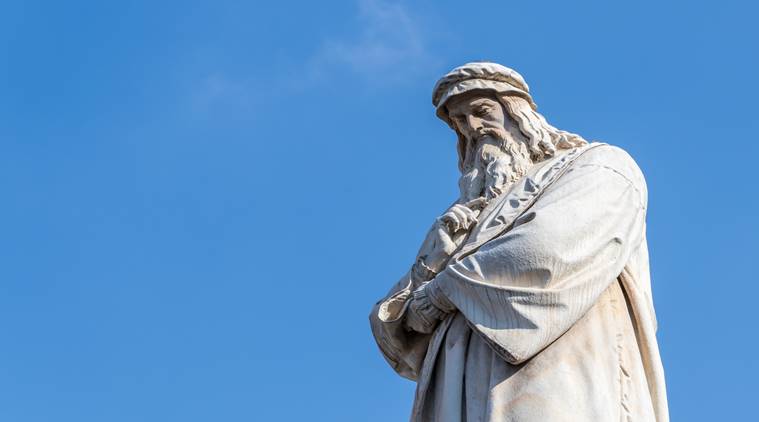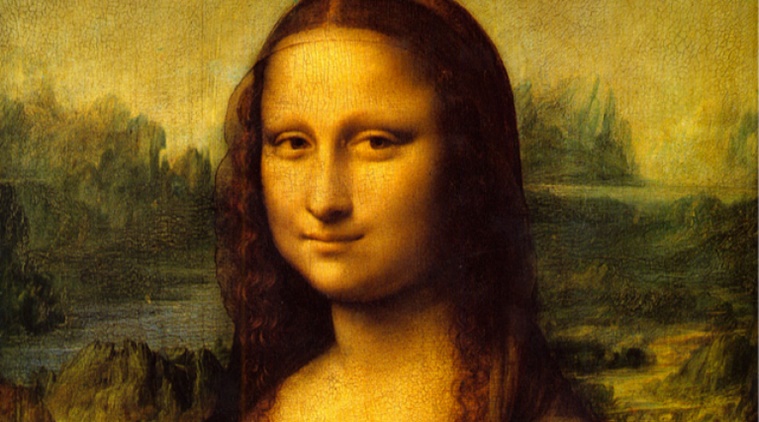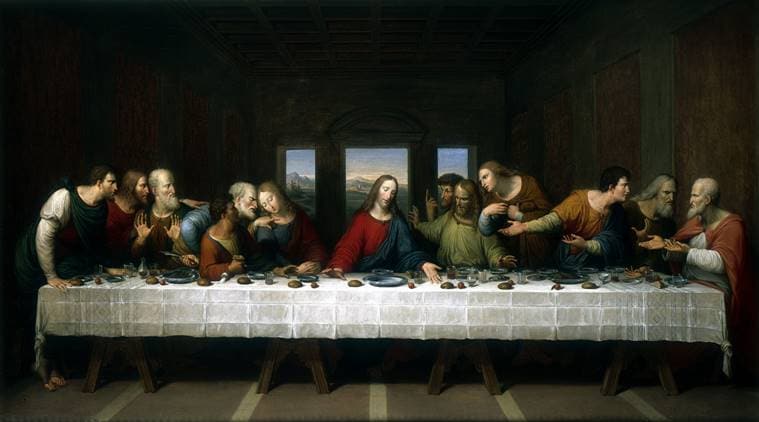📣 For more lifestyle news, click here to join our WhatsApp Channel and also follow us on Instagram
Leonardo da Vinci’s 500th death anniversary: A look at the artist’s most famous works
Many of his paintings have been lost, destroyed or over-painted but some of his artworks became iconic gaining worldwide acclaim for their realistic appeal.
 In 1872, a monument was erected at the square in honor of Leonardo da Vinci, who was considered one of the most multi-talented people.
In 1872, a monument was erected at the square in honor of Leonardo da Vinci, who was considered one of the most multi-talented people.
One of the greatest Renaissance painters, Leonardo da Vinci lived in the golden age of creativity in Italy among contemporaries like Raphael and Michelangelo. The genius artist, who was born on April 15, 1452 and died on May 2, 1519, began a nine-year long apprenticeship at the age of 14 years under Andrea del Verrocchio, a popular sculptor, painter and goldsmith.
Many of his paintings have been lost, destroyed or over-painted, but some of his artworks became iconic gaining worldwide acclaim for their realistic appeal.
On his 500th death anniversary, we take a look at some of his greatest paintings of all-time.
Mona Lisa
 Marking the realist perspective, da Vinci is said to have used sfumato, an artistic technique. (Source: iStock / Getty Images Plus)
Marking the realist perspective, da Vinci is said to have used sfumato, an artistic technique. (Source: iStock / Getty Images Plus)
Known as the world’s most famous artwork and the most replicated as well, the seemingly “enigmatic smile” is the highlight of Mona Lisa at the Louvre Museum. Marking the realist perspective, da Vinci is said to have used sfumato, an artistic technique for depicting the subtle gradations of light and shadow, rather than line to paint the image. The veil, wrought tresses, perplexing expression and folded fabric along with the pose, make the painting an iconic one.
Last Supper
 The news was perceived by all the 12 disciples in a different way. (Source: iStock / Getty Images Plus)
The news was perceived by all the 12 disciples in a different way. (Source: iStock / Getty Images Plus)
What looks like a very simple composition is in fact deep in its depiction of key moments from the Gospel, including the betrayal declaration by Jesus Christ where he predicted that one of his own disciples would betray him. The news was perceived by all the 12 disciples in a different way – from anger to shock and horror. Leonardo da Vinci tried to understand the intricacies of a man’s character through his expression, posture and gesture. With Jesus sitting in the center with a serene expression, the painting depicts the moments that make up the New Testament.
Interestingly, da Vinci never worked on such a big painting ever before. Made by using experimental pigments on dry plaster, unlike frescos that use wet plaster, the original painting is much more than what remains.
Vitruvian Man
 Old aged paper with medical symbol of vitruvian man by Leonardo da Vinci. (Source: iStock / Getty Images Plus)
Old aged paper with medical symbol of vitruvian man by Leonardo da Vinci. (Source: iStock / Getty Images Plus)
The pen and ink drawing of the ‘Vitruvian Man’ was found in one of his notebooks. Written in mirror script, the work depicts the ideal human proportions as per Roman architect Vitruvius’ book on architecture from the first century BCE. It is based on the theory that an ideal human could fit within a circle and a square. The artwork combines mathematics, philosophy and art.
The Virgin of the Rocks
 Vinci depicted figures in linear arrangements, separate from one another, and stiff in form. (Source: Wikimedia Commons)
Vinci depicted figures in linear arrangements, separate from one another, and stiff in form. (Source: Wikimedia Commons)
This oil painting is one of the two paintings to depict an apocryphal legend of the Holy Family meeting Saint John, the Baptist as they flee to Egypt from Herod’s Massacre of the Innocents. Using sfumato, da Vinci, depicted figures in linear arrangements, separate from one another, and stiff in form.
The Christ Child, the infant John, and an archangel are arranged in a pyramidal composition where they seem to interact with one another through gestures and glances. Mary seems to sit on a rocky landscape unlike many paintings that depict her as sitting on a throne. The human touch rendered to the Holy Family is also another highlight of the 1483-86 period painting.
Head of a Woman
 The painting is considered a proof of the polymath’s varied sense of art. (Source: Wikimedia Commons)
The painting is considered a proof of the polymath’s varied sense of art. (Source: Wikimedia Commons)
As a small brush painting with pigment, it depicts a young woman with a head tilt and her eyes looking down. Nicknamed as ‘La scapigliata’ meaning disheveled, referring to the young woman’s ‘disheveled’ strands of hair, the painting is considered a proof of the polymath’s varied sense of art by including expressive drawing to showcase form as well as detailing in terms of layering.
📣 For more lifestyle news, click here to join our WhatsApp Channel and also follow us on Instagram





- 01
- 02
- 03
- 04
- 05






















